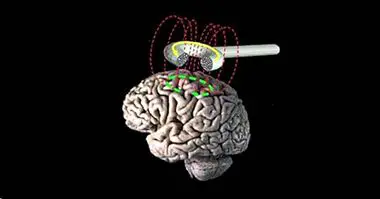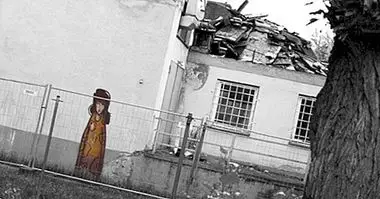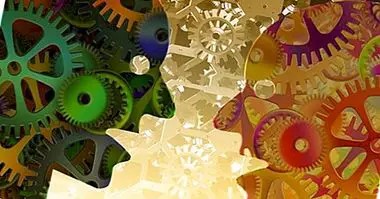Top 10 tests to detect autism
When we think of some type of childhood developmental disorder, probably the first names to come to our mind are ADHD and autism. This last condition is particularly difficult for many people to understand and can generate a high level of suffering for the child who suffers, not feeling understood, and their immediate environment to fear not being able to approach their child.
Having autism also involves a series of difficulties that will have to be faced and that must be treated throughout the process of development and the life of the subject. But to be able to help this sector of the population it is necessary first of all to be able to determine if this disorder is suffered or not. In this sense, we need a series of tests or tests to detect autism . In this article, we will mention some of the most applicable.
- Related article: "Autism Spectrum Disorders: 10 Symptoms and Diagnosis"
Autism: what is it?
Before entering to indicate some of the main existing tests and tests to detect autism, it would be useful to go a little deeper into the notion that we have regarding this disorder.
We call autism, now autistic spectrum disorder, a type of neurodevelopmental alteration (that is, it originates during the stage of growth and neuronal development) characterized by the presence of problems and severe difficulties in language, socialization and behavior. This disorder usually can be detected before three years of age , appearing in very early stages of life.
Each of the three aspects mentioned above has particularities that suppose a difficulty for the minor's adaptation to the environment .
At a socio-relational level we observe the presence of a lack of interaction and an apparent lack of interest in bonding with others, being closed in on themselves. And is that people with this disorder have severe difficulties when it comes to possessing a theory of mind that allows them to see that others are entities with an independent mind and separate from their own. There is a difficulty in initiating and responding to social interactions, with little socio-emotional reciprocity.
With regard to communicative problems a marked literalness is observed (They do not usually understand figurative language), as well as the high difficulty or impossibility to understand and use nonverbal language. It is not uncommon also that there are delays in the acquisition of language, and the problems for practical use are well known and appropriate to the context of this. In some cases, the subject may not develop the language at all. Also, they tend to have problems with speaking shifts and to respond to interactions.
Finally, alterations also occur in behavior. It highlights the presence of restricted interests and a high need for routines , being the presence of changes something tremendously stressful for them since they need them to have a sense of security. It is not uncommon to present expressions, movements or use of repeated objects, often as a way to calm down. It has also been observed that it is common to be hyper or hyposensitive to stimulation, reacting in excess or not reacting at all to noises and lights.
These are some of the main characteristics and criteria of people with autism. It must be taken into account that, although it is usually diagnosed in children, it is a chronic disorder that will persist into adulthood and that requires appropriate therapeutic management in order to reduce the possible affectation in the different areas of life and increase the level of autonomy and well-being of these people.
- Maybe you're interested: "Types of psychological tests: their functions and characteristics"
The main tests for autism
A basic aspect to be able to intervene in this disorder is the fact of detecting it. In this sense, numerous tests have been developed over the years in order to detect the presence of an autism spectrum disorder and the aspects that in each case appear altered. These tests can be passed on to different agents, either the minor himself or more usually the parents and teachers.
Below we will see some of the most well-known tests that are usually used in the detection of autism, recommended by well known publishers such as TEA Ediciones or different organizations specialized in Autism.
It is important to bear in mind that the ones we are going to mention are not all that exist, but only some of the most representative ones.It should also be noted that, both in this and in other disorders, the results of a test are not determinants or a sufficient condition for the diagnosis, and other information such as those obtained in interviews, with the observation of the person or with the reports of other people .
1. Observation Scale for the Diagnosis of Autism (ADOS)
One of the best known and reference tests in the diagnosis of autism, it is an elaborated scale with the purpose of evaluating the communicative capacities, social interaction and the game and use of materials and that offers cut points. It consists of four modules of which only that which is appropriate to the subject in question is applied by age range and communicative level . A minimum mental age of two years of age is required and allows the minor to be evaluated based on his execution. At present more advanced editions can be found like the ADOS 2. It can evaluate children and adults.
2. Interview for the Autism Diagnosis (ADI)
The ADI and its review (ADI-R) are clinical interviews designed to conduct a thorough evaluation regarding a possible case of autism. It consists of about 93 questions (in the ADI-R version) which explore language, reciprocal social interaction and restricted behaviors / interests. It focuses on the typical behaviors of the subject with autism that rarely appear in people without this affectation. The punctuation can be codified and later it is interpreted with algorithms, not having comparative scales.
3. Adaptive Behavior Assessment System (ABAS)
Instrument that evaluates adaptive behavior from birth to 89 years. Evaluate the areas of communication, utilization of community resources, functional academic skills, life at home, life at school, health and safety, leisure, self-care, self-direction, social, motor and employment.
The second version (ABAS-II) also includes the conceptual, social and practical global indexes. Although it is not unique to autism, it allows evaluating the main areas affected by this disorder. They are the parents, teachers or close friends who usually give an answer and complete the test, although the subject can also answer it.
4. Autistic Spectrum Quotient (AQ)
This is a 50-question Baron-Cohen questionnaire that is designed for the subject to answer, and is based on assessing the degree of agreement (between total agreement and total disagreement, there being a total of four possible answers) with each one of the different questions. In this sense we can find specific versions for different profiles, such as the Autism Spectrum Quotient for Children (AQC), Autism Spectrum Quotient for Adolescents (AQA) and Abbreviated Autism Spectrum Quotient (AQS).
They can also be filled by relatives or teachers. It offers cutting points that allow to separate the old Kanner type Autism of Asperger's syndrome , and allows to distinguish different phenotypes ..
5. Social Communication Questionnaire (SCQ)
This rapid application questionnaire must be answered by the subject's caregivers, consisting of a total of 40 items, among which interaction problems, communication problems and restricted and stereotyped behaviors are evaluated. It has a form A that evaluates the whole life of the subject and a form B to assess the situation of the last three months. Depending on the result, it may be advisable to go to another more complete test such as ADOS or ADI.
6. Screening Questionnaire for the Autistic Spectrum (ASSQ)
This questionnaire is designed for children between seven and sixteen years of age, consisting of a total of 27 questions to answer with Yes / No / Something / Sometimes. It is rather a screening, and tends to focus more on the old Asperger (which is now part of the autism spectrum disorder). It must be completed by parents and teachers and allows to identify different predominant features in children with problems of social interaction and behavior. Currently there is the most complete extended version (ASSQ-REV).
7. Modified Childhood Autism Questionnaire (M-CHAT)
Screening test to be answered by the parents of the minor. If this fails in more than three items, a more detailed exploration should be done to assess the presence of ASD. Designed to evaluate children around two years of age, based on questions to answer with Yes or No.
8. Autistic Spectrum Inventory (IDEA)
Inventory generated with the purpose of evaluating a dozen characteristics of people with autism and other neurodevelopmental disorders. More than in detection, it focuses on the assessment of the severity of the patient's condition. It allows to identify the severity of autistic traits , as well as generate treatment guidelines and test the changes that these treatments generate.
Also, depending on the score the subject can be classified into four different types of autism (highlighting the classic and Asperger, in addition to the regressive autism and high functioning autism.) It must be completed by the professional based on information from the observation and interview to the environment.
9.Baby and Toddler Questionnaire (CSBS DP)
It is a scale that assesses the presence of different predictors of language and social communication. Thought to pass between six months and two years. It must be completed by a parent, caregiver or person in frequent contact with the child.
10. Infant Asperger Syndrome Test (CAST)
Questionnaire of 37 questions that allows to detect early characteristics of children with Asperger . It is passed by parents of children between four and eleven years of age.



















